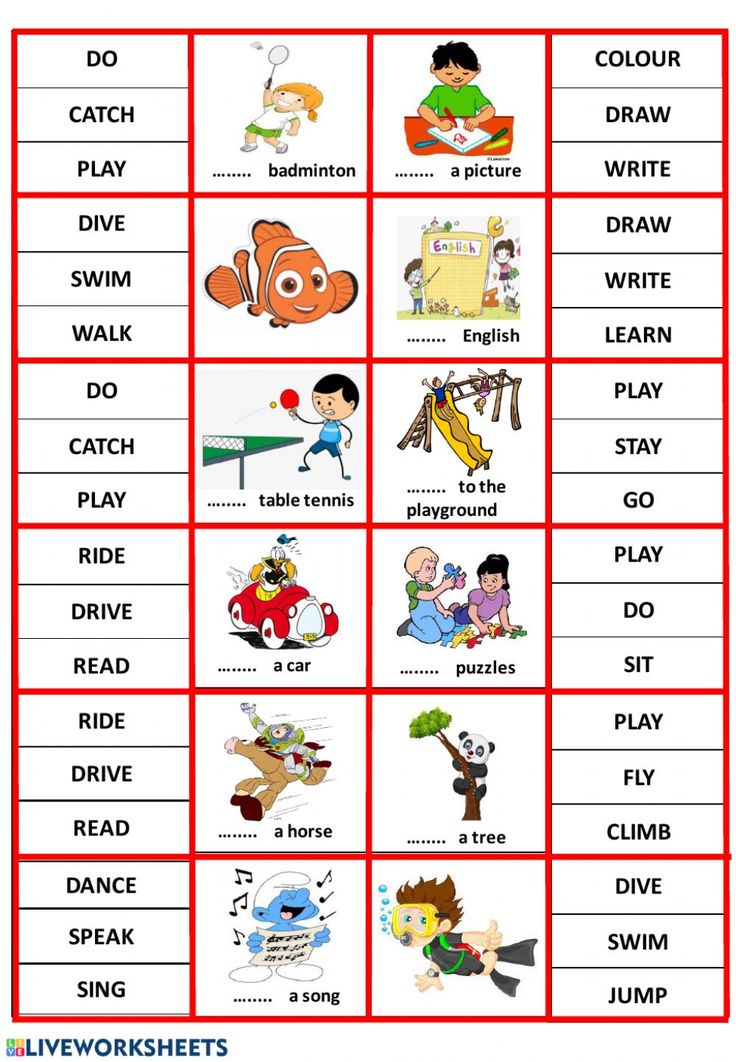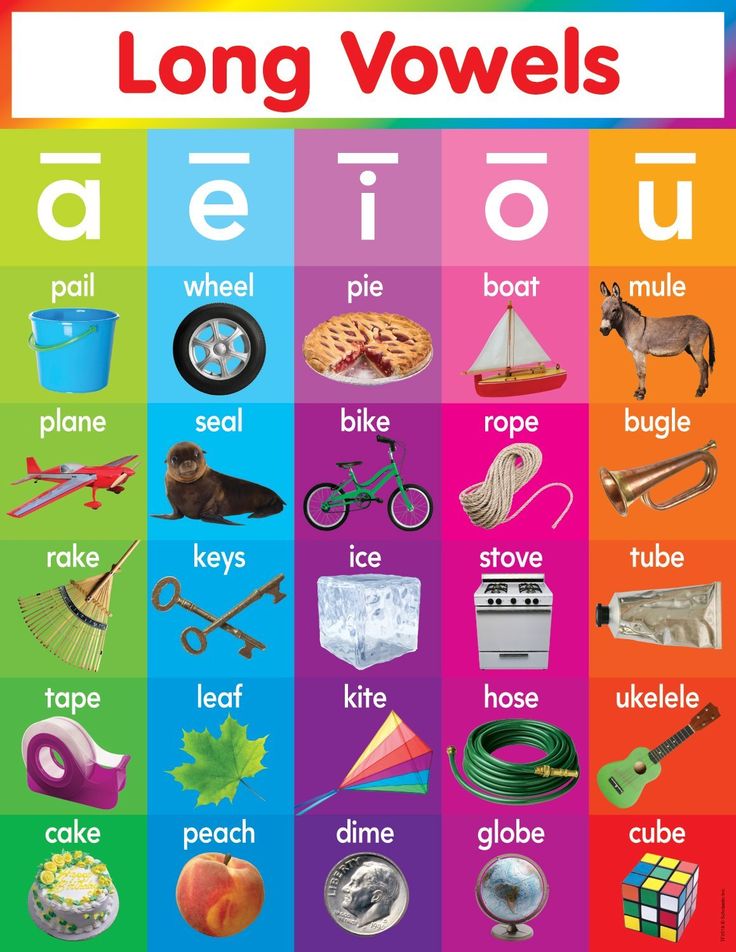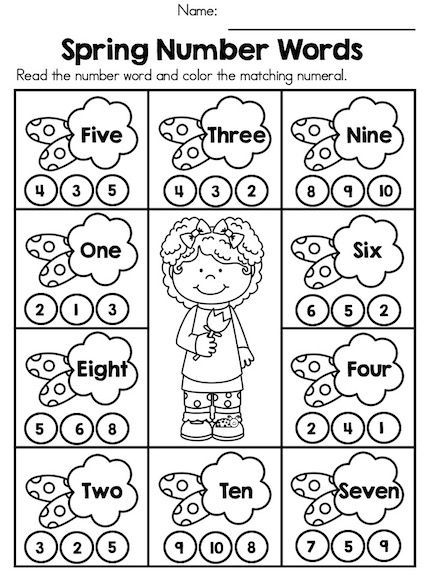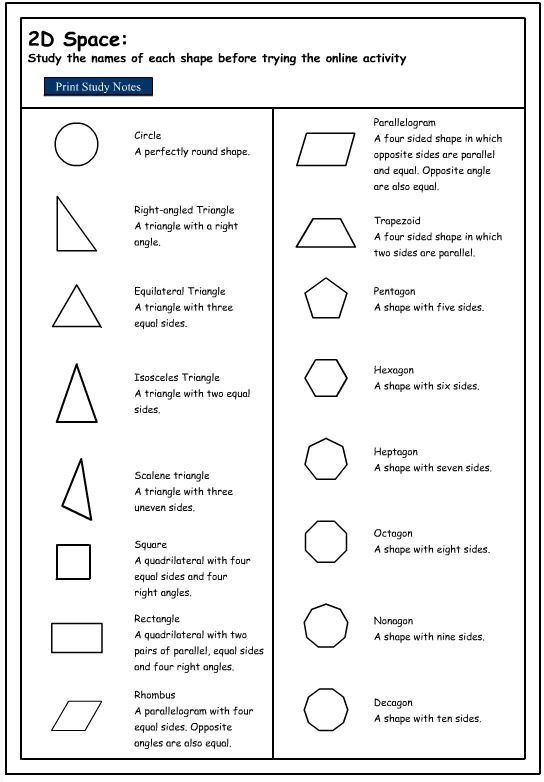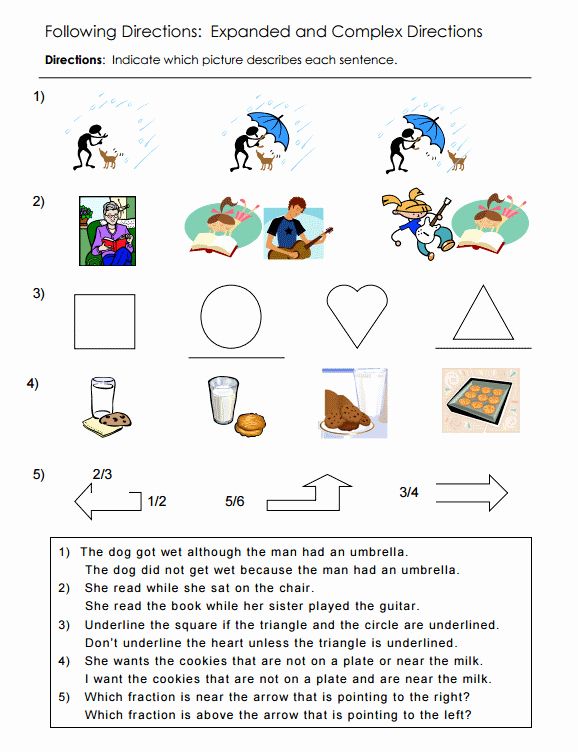Vowel sounds for kindergarten
All About Short and Long Vowel Sounds for Preschoolers
Have you ever wondered or been asked by your child why ‘a’ in ‘cat’ and ‘cake’ sound different? Or why words like ‘cub’ and ‘cube’ are pronounced differently though their spellings are almost similar? Well, you are not alone!
The sounds of the letters of the English alphabet can vary quite a bit. In some cases, it can get tricky. Not all letters make the same sound in all words. Teaching preschoolers to read English can be challenging as the letters can make different sounds depending on how they are used. A case in point is the short and long vowel sounds for preschoolers. Read on to find out how your child can learn vowel sounds and recognize their differences.
Learning short and long vowel sounds- what are they?
Learning phonics sounds is getting to know all about all vowel and consonant sounds that make up the 26 letters of the English alphabet. Each of the 5 vowels (a, e, i, o, u) can make at least 2 sounds. For example, the vowel ‘a’ sounds different in ‘cat’ and ‘cake’. How we spell with vowels does not always determine the sound it makes.
Each vowel makes two sounds- a short sound and a long sound. In some cases, they can be silent too! When a vowel makes the sound of a particular letter, then it is a short sound. However, when the vowel sounds like the letter’s name, then it makes a long sound. The sound the vowel makes depends on its position in the word and the letters that surround it.
For example:- the ‘a’ in ‘fat’ and ‘e’ in ‘bed’ make short vowel sounds. While in ‘fate’ and ‘wheat’ they make the long vowel sounds.
So, based on where and the vowel is placed in a word, its length and sound can change. When teaching preschoolers to read, you must help them understand the rules for what sound the vowels make in different instances. Yes, short and long vowel sounds for kids can be confusing at times. However, regular practice with them to recognize the distinctions will help.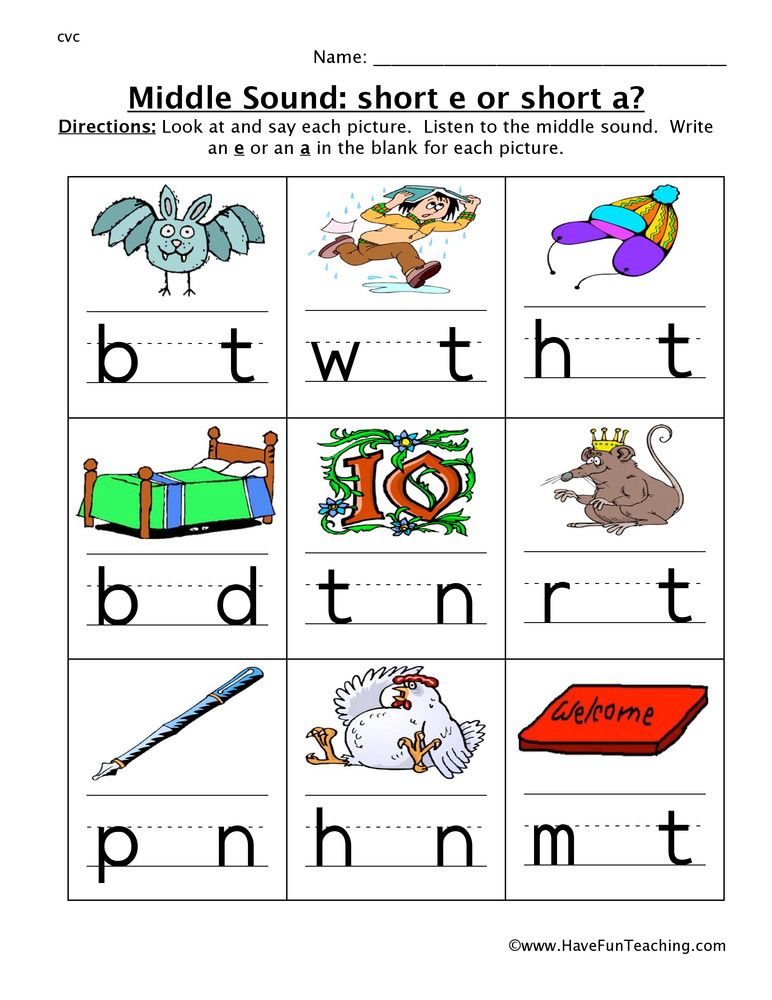
Rules to bear in mind while learning short and long vowel sounds
Here are some basic rules to help you introduce short and long vowel words for preschoolers. Do remember that rules have exceptions too.
Rule No.
Vowel Position
Vowel Sound
Examples
1.
When a word has only one vowel and ends with a consonant
Vowel makes a short sound
‘a’ in ‘jam’
‘e’ in ‘west’
‘o’ in ‘hot’
‘i’ in ‘fish’
‘u’ in ‘cup’
2.
When a word has two vowels separated by two or more letters
The first vowel makes a short sound
as in ‘apple’
as in ‘octopus’
as in ‘basket’
as in ‘elephant’
as in ‘umbrella’
3.
When a word ends with the letter ‘e’ (magic ‘e’/ silent ‘e’)
The first vowel makes a long sound
‘cap’ becomes ‘cape’
‘kit’ becomes ‘kite’
‘tub’ becomes ‘tube’
as in ‘game’
as in ‘time’
4.
When a word has two vowels walking together the first one does
the talking
The first vowel makes a long sound
The second vowel remains silent
as in ‘tie’
as in ‘boat’
as in ‘rain’
as in ‘value’
as in ‘feet’
Here's a long and short vowel sounds list: few more examples
Vowel
Short Vowel
Long Vowel
Aa
‘fat’, ‘map’, ‘hand’, ‘lamp’, ‘glass’
‘fate’, ‘pain’, ‘game’, ‘mail’, ‘whale’
Ee
‘egg’, ‘red’, ‘nest’, ‘bell’, ‘smell’
‘ear’, ‘sea’, ‘heal’, ‘weak’, ‘three’
Ii
‘pig’, ‘rib’, ‘fist’, ‘milk’, ‘swim’
‘hide’, ‘tile’, ‘lime’, ‘wipe’, ‘prize’
Oo
‘fox’, ‘hop’, ‘rod’, ‘drop’, ‘pond’
‘road’, ‘goat’, ‘bone’, ‘note’, ‘roast’
Uu
‘bud’, ‘gun’, ‘hug’, ‘dump’, ‘puff’
‘rule’, ‘true’, ‘dune’, ‘flute’, ‘fruit
Ways to teach short and long vowel soundsHere are some simple long and short vowel activities to introduce and practice the vowel sounds with your kids.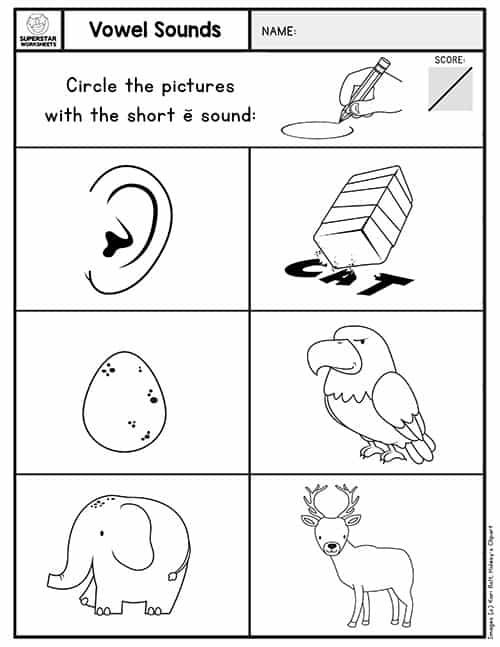
- Fun with Songs
Learning the different vowel sounds can be more fun with songs. They are one of the best ways to teach short and long vowel sounds, as their catchy rhythms can help kids learn vowel sounds and remember them easily. Check out Kutuki’s ‘Short and Long Vowel Song’ . This song is great for kids learning short and long vowel sounds.
For more such fun and engaging songs, download the Kutuki kids learning app now!
- Use hand motions or movements
Use simple gestures for every vowel. This can help kids associate the vowels with the motions and the sound they are making. In addition to working on their muscle memory, the kinesthetic activity makes learning more engaging for kids. For instance, have your child bend their knees when they hear a short vowel sound. For a long vowel sound, ask them to jump up and clap.
- Mark the vowels
It is useful to place a mark on top of the vowels.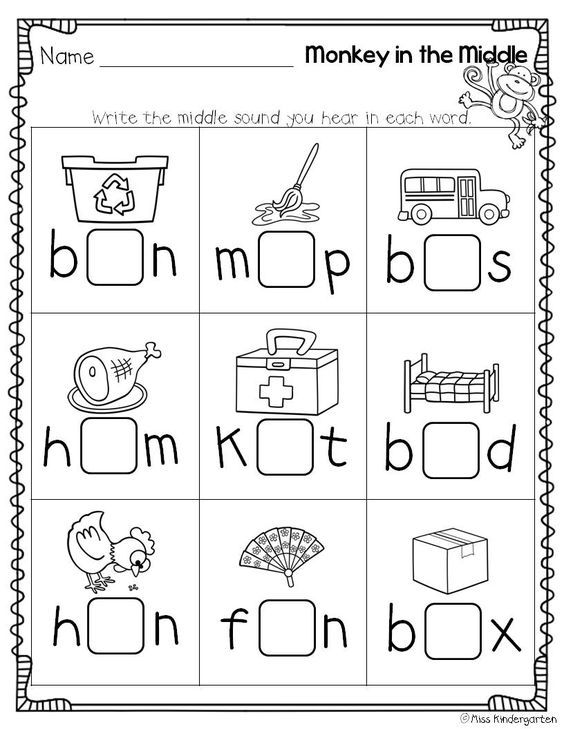 It indicates the vowel sound to be used. For instance, a short vowel sound is indicated by a curved symbol above the vowel-like ‘ă’ in ‘măn’. While a long vowel sound is represented by a small horizontal line above it, like ‘ā’ in ‘māin’. Such symbols will reinforce your kid’s ability to recognize and use the appropriate vowel sound effectively.
It indicates the vowel sound to be used. For instance, a short vowel sound is indicated by a curved symbol above the vowel-like ‘ă’ in ‘măn’. While a long vowel sound is represented by a small horizontal line above it, like ‘ā’ in ‘māin’. Such symbols will reinforce your kid’s ability to recognize and use the appropriate vowel sound effectively.
- Create Practice Sheets
Have your child practice the short and long vowel sounds using activity sheets. These help kids recognize, understand, and distinguish words with a long vowel sound from those with a short vowel sound.
Please Note: These worksheets are subject to copyright. They are exclusively available only for students enrolled in Kutuki’s Phonics Program.
Kutuki’s Live Phonics Program has an extensive collection of such worksheets. For instance, one such activity has kids circle given pictures that match the vowel sound. While another, have them add magic ‘e’ to the given word and match the word with the right image.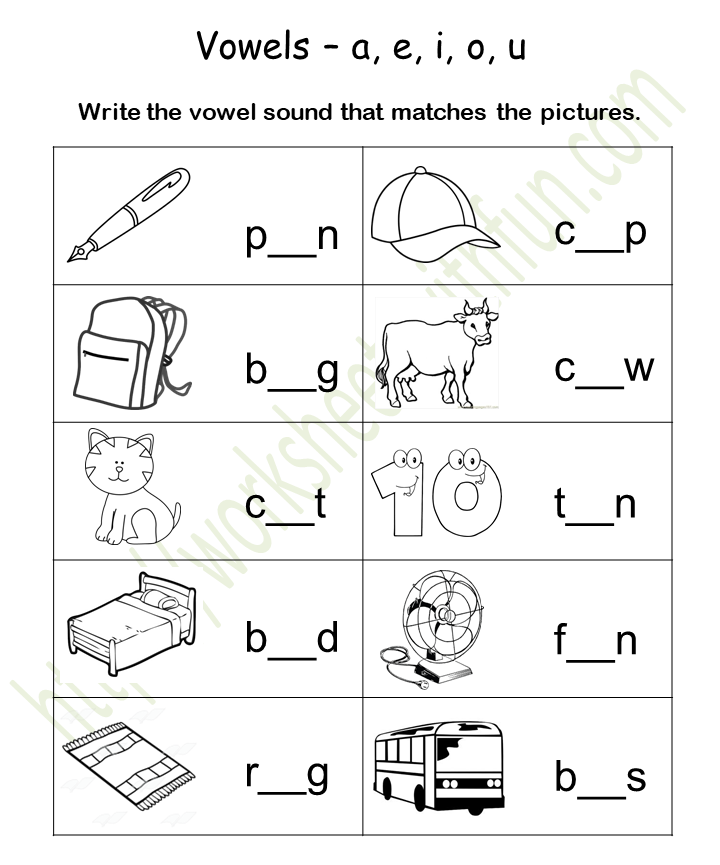
These are just a few activities to help you get started with short and long vowel sounds for preschoolers. If your child is struggling to learn vowel sounds, do not stress or overwhelm the child about it. Remember, every child learns at their own pace!
If you are looking for expert guidance on phonics for your child, enroll in Kutuki’s Live Phonics Program today. 1000s of students have become active readers. Your child could too! The Kutuki kids learning app offers interactive stories, engaging rhymes, and games with attractive animations and illustrations to meet the learning needs of preschoolers
How do you Teach Short Vowel Sounds in Kindergarten and First Grade?
First of all, do you know how easy it is to hit the "b" when typing the word vowel?
Without editing, this whole post could have been about short bowels...Oh, my!
Let's face it! Short vowels are hard to teach and difficult to learn!
What's a teacher to do?? Well, I have some questions for you.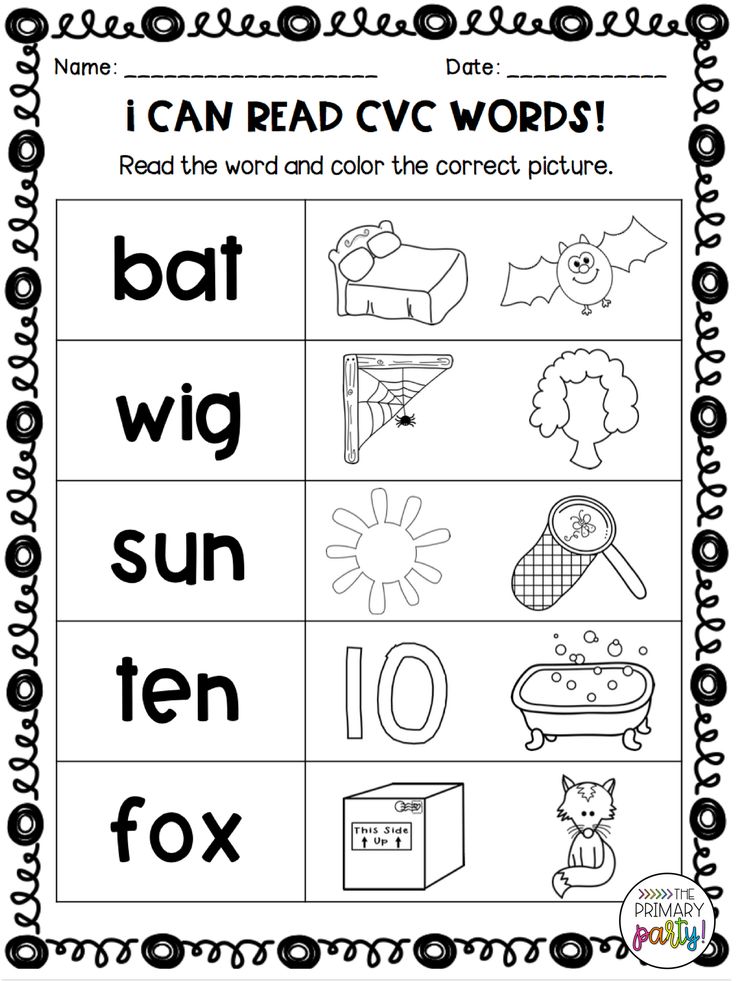
1) In what order do you teach the vowels?
2) How long to you spend on each vowel?
3) Do you teach vowels using word families?
4) Does that seem like a lot of questions?
I've been in education awhile, and it seems like every few years, we're told something different from the "experts" about teaching Phonics. You're thinking, "But wait, I thought we were the experts!" Ahh!
Thankfully, for first grade teachers, most students come to us knowing the sounds short vowels make. But the littles who don't-Whew! Seriously!
How do the PreK and Kindergarten teachers do it?? Insert pat on the back here.
So, how do I teach short vowels?
We spend about two weeks on each sound. I teach them in this order-a, i, o, u, e. I save "e" for last. It's so similar to "i" and let's face it, we don't really use that sound much in the South...
Image from Kinderglynn
See what I mean? In the South, that rhymes.
I introduce/review the sound on Monday during Morning Meeting.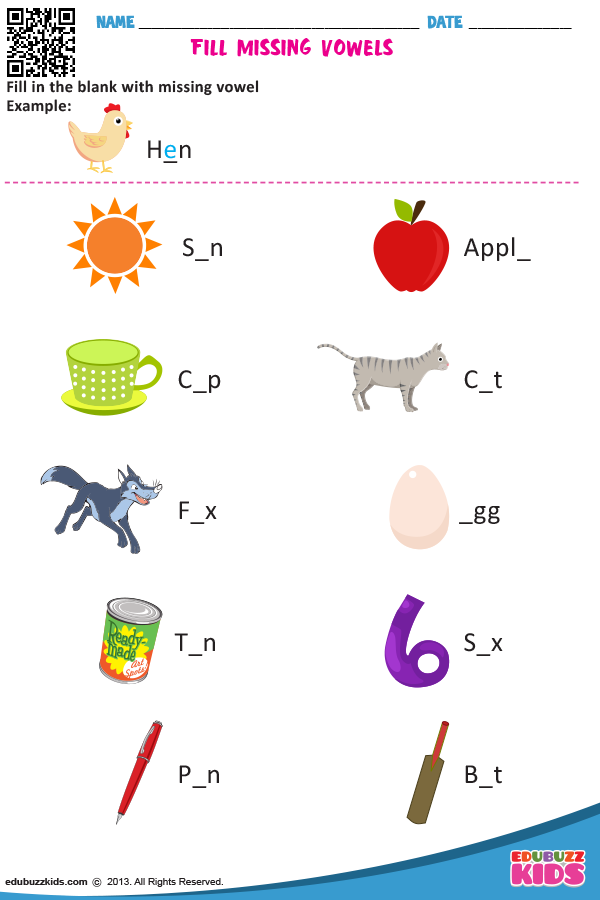 If there is literature available using that sound, I use it. For instance, Joy Cowley's Dan the Flying Man is great for introducing short "a". It's available in big book format and in 6-packs with CD! They can listen all week!
If there is literature available using that sound, I use it. For instance, Joy Cowley's Dan the Flying Man is great for introducing short "a". It's available in big book format and in 6-packs with CD! They can listen all week!
Image from The Wright Group
We use large letter cards to put short "a" chunks together. For instance, the letter cards "a" and "d" make -ad. We then add a beginning sound to that chunk (-ad becomes "mad"). We make as many chunks as can brainstorm.
We do these types of activities every morning for the two week period we cover the vowel. During the first week, I post my Read the Room cards (see below), however, the kiddos don't complete this activity until the second week. I like having the cards up for them to read that first week.
From the beginning of the year, I teach my students to use Elkonin Boxes. See this post for directions on these very powerful tools for segmenting sounds.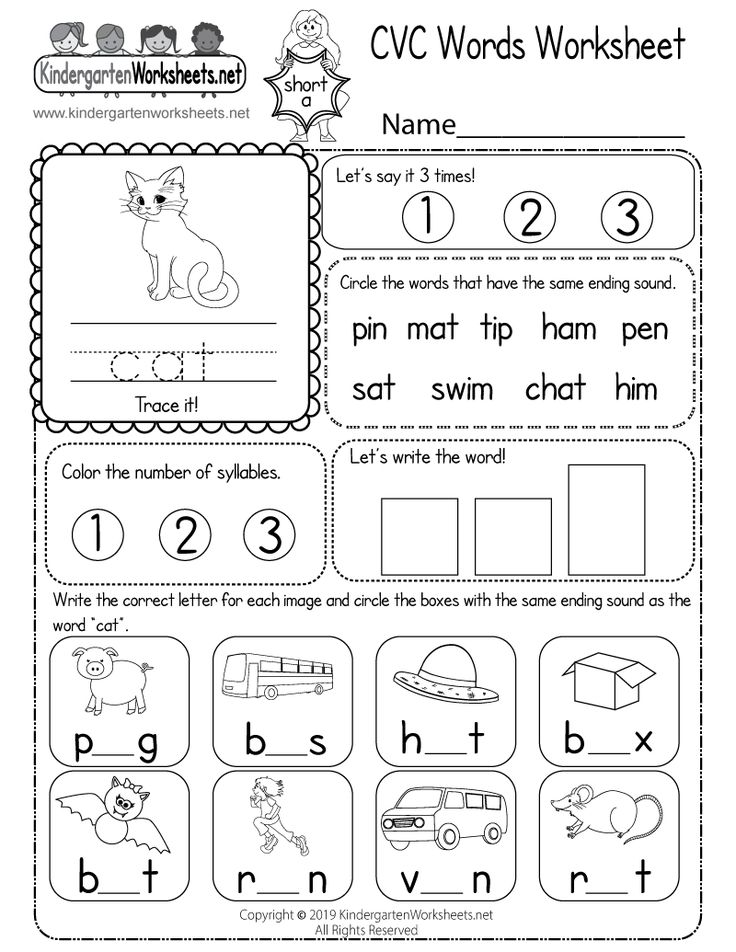 I use sound boxes EVERY DAY in small groups, and once kiddos feel comfortable, they use them independently in word work stations. They also complete short vowel booklets which reinforce the use of sound boxes and using words in contextual sentences.
I use sound boxes EVERY DAY in small groups, and once kiddos feel comfortable, they use them independently in word work stations. They also complete short vowel booklets which reinforce the use of sound boxes and using words in contextual sentences.
This one was letting her peace tattoo "set!" Ha!
During the two week period, we complete A LOT of short "a" activities. I want these pumpkins to habituate that sound and be able to make and break words easily. This is truly the first step in seeing how words work.
Here are a few more items I created and will use with my kiddos.
I created a Read and Write the Room for each short vowel (CVC pattern). All packets contain 24 cards and a choice of recording sheets.
I will keep these word cards posted on the wall for the entire two weeks we cover that vowel. You can read more about Read and Write the Room here.
I also created "I Have, Who Has" games for each short vowel.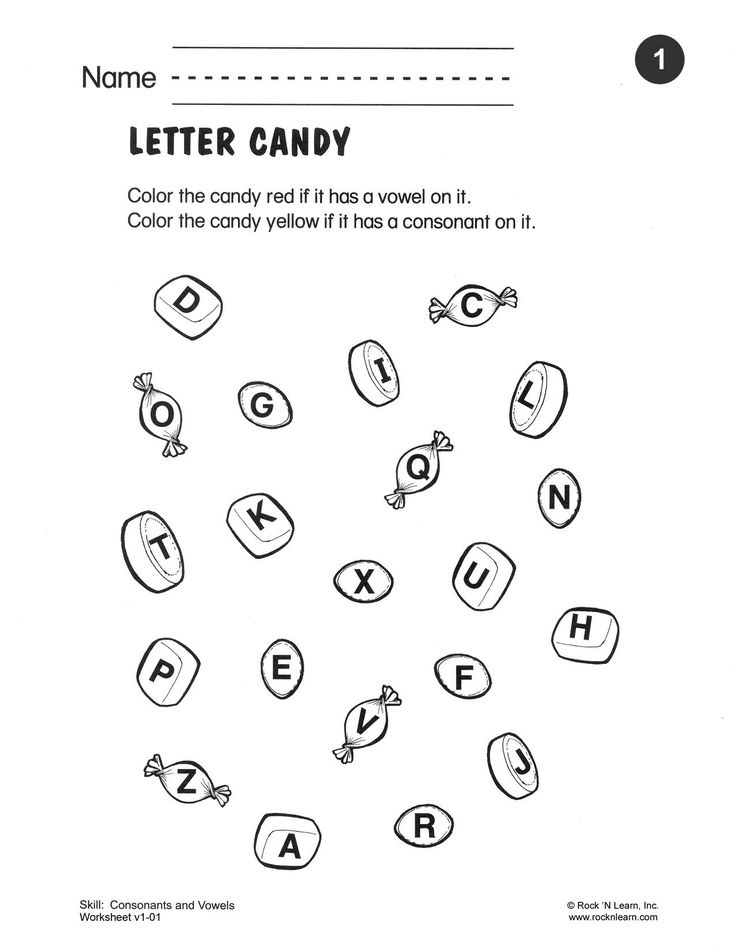 The cards and words match my Read and Write the Room packs.
The cards and words match my Read and Write the Room packs.
We will play these games once a day during the two week period. We'll time ourselves and try to beat each day's time. The kids love this!
We also spend quite a bit of time reviewing sounds throughout the year. Here's an example of a Monday Phonics chart.
AND-I like to throw in a few sneaky reviews-where the kiddos don't realize they're reviewing. My kiddos love puzzles, and Lakeshore Learning has such great quality!
They offer a 4-letter version of this puzzle, too.
The vowel practice never stops! Ha!
So, how do you teach short vowels?
Happy weekend, y'all!
Abstract of a lesson in teaching literacy "Learning vowels and consonants with Masha" | Literacy training plan (preparatory group):
Municipal Budgetary Educational Institution kindergarten No. 1 "Kolosok" of the Komsomolsky district of the Chuvash Republic
Summary of teaching literacy with children of the preparatory for the school
on the topic:
"Learn vowels and consonants with Masha"
| Prepared by: speech therapist MBDOU Kindergarten No. |
Komsomolskoye, 2019
Goal: Teaching children the ability to differentiate sounds into vowels and consonants
Tasks:
Educational:
- Continue to learn to divide isolated sounds into vowels and consonants, observing your voice and articulatory organs;
- Continue learning to highlight 1 sound in a word and correlate it with a certain color, depending on whether the sound is a vowel-consonant;
- Continue to learn how to analyze the sound of the word;
- Exercise in the ability to select words for a given scheme.
Developing:
- Develop auditory attention and phonemic hearing;
- Develop auditory memory, thinking.
Educational:
- Continue to develop the ability to act according to instructions;
- Continue to teach to listen carefully to an adult, to be active.
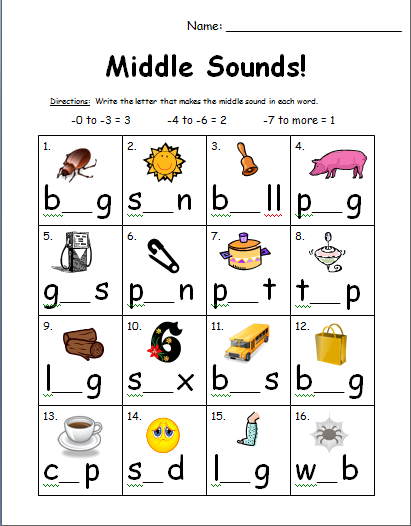
Course of the lesson
Organizational moment
- Good afternoon, guys! Look who came to visit you today? Did you recognize her? (shows the doll Masha from the cartoon "Masha and the Bear") Of course, this is Masha! She, like you guys, is going to school soon. Misha prepared tasks for Masha to check if she is ready for school. (The teacher shows a closed box with the inscription "Masha") But, Masha is afraid that she will not cope with the tasks alone. Well guys! Are you ready to help Masha? (Yes) Get ready and you Masha listen carefully and memorize!
- Dividing sounds into vowel and consonant
- Before going to school, we must learn to hear all the sounds in a word and determine which sound is a vowel or a consonant. So let's make a sound! (Children sing the sound A). Does the voice come out freely? (Yes!). That's right, the voice comes out freely, which means the sound is a vowel. Let's make the sound S! (Children pronounce) Does the voice come out freely or is something preventing it? (Answers of children).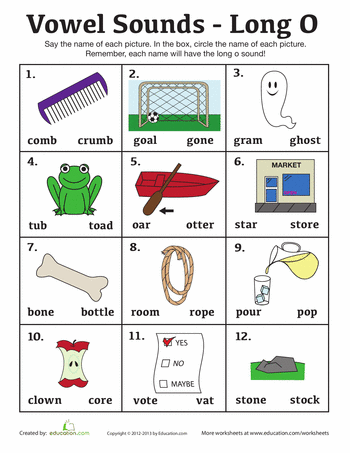 The voice meets an obstacle in the form of teeth and tongue, which means the sound is consonant. (Next, the teacher pronounces the sounds O, Sh, M, U, Z, Y, E, D - the children determine whether the sound is a vowel or a consonant)
The voice meets an obstacle in the form of teeth and tongue, which means the sound is consonant. (Next, the teacher pronounces the sounds O, Sh, M, U, Z, Y, E, D - the children determine whether the sound is a vowel or a consonant)
2. The game "Determine what sound and raise the circle of the desired color"
- Guys, and you, Masha, must remember that we denote vowel sounds in red, the voice comes out freely, it is sung, nothing interferes with it (a picture is shown -scheme). We designate consonant sounds in blue, the voice meets an obstacle in the form of teeth, lips, tongue (a picture-diagram is shown)
I suggest playing a game. I will name the sounds, and you will determine the sound of a vowel or consonant and raise the desired color (The teacher calls the sound - the children raise the circles of the corresponding color)
3. Naming vowels
- So, let's name the vowels again. There aren't many of them. (Children call the vowels A, O, U, Y, E, I)
4. Task "Name the picture and stick a circle of the right color"
Task "Name the picture and stick a circle of the right color"
- Guys, we can distinguish between vowels and consonants. And now we are ready to help Masha complete one of the tasks in the package. (The teacher takes out a poster with pictures and self-adhesive mugs in blue and red). You must determine what sound the picture begins with and stick a circle of the desired color next to it. If the word begins with a vowel sound, glue a red circle next to it. If from a consonant, we glue a blue circle. (Children perform the first few pictures together with the teacher. Then each child goes to the easel, loudly calls the picture, and sticks the right circle)
- Well done guys! You did it. Let's move on to the next task from the package.
5. Game exercise "Put the pictures in the right houses"
The teacher takes out two cardboard houses with a red and blue roof, as well as pictures. In the center of the house, instead of windows, there are transparent pockets for inserting pictures.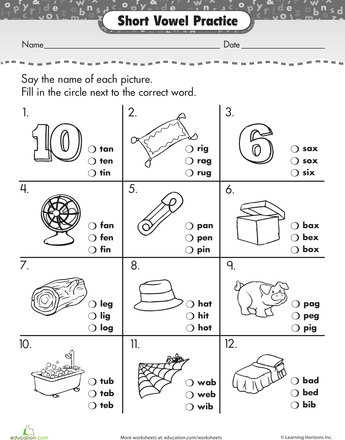
- Guys, in front of you is a house with a red roof and a house with a blue roof (The teacher fixes them on an easel). And also pictures. You will need to determine with what sound (vowel or consonant) the word in the picture begins and populate it in the right house. We will name the picture quietly, to ourselves.
6. Physical education
We know a lot of words on the vowel: Stork autumn duck hoar. (Children step on a red circle and jump on the spot) on the consonant, we also know: Beetle of firewood grass goat. (Children step on a blue circle and jump on the spot) And now, a friend do not yawn, you come correctly! (The teacher calls words to vowel and consonants, children step on circles of the right color).
7. Sound analysis of the word COM
- Let's move on to the next task from the premise. (The teacher takes out a poster and three circles: two blue ones and a red one) A riddle is written here. The mystery about the most beloved fish of Masha
A huge fish lies at the bottom, as if a block.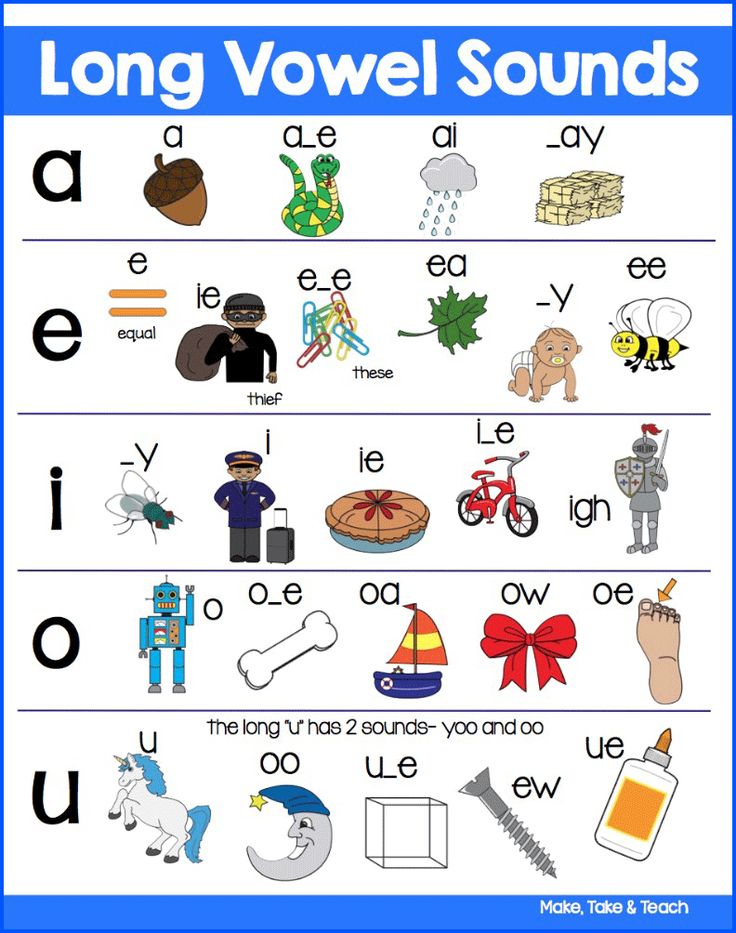 Lies, moves his mustache, does not tell the fish to yawn. There is a house in a deep pool, , , , , , , , , , , ,0003
Lies, moves his mustache, does not tell the fish to yawn. There is a house in a deep pool, , , , , , , , , , , ,0003
- We need to spell out the word COM using these circles. So, what 1 sound is heard in the word COM (Correctly C) C is what sound (Consonant). So, we put in a circle of what color (Blue) What sound goes on (Sound O) O - this is what sound (Vowel). So, lay out a circle of what color (Red). What we got (CO). Which sound comes next (Sound M). M is what sound (Consonant). So, put a circle of what color (Blue) Name the consonants in the word COM (M and C). What is the vowel sound in the word COM (O). Well done!
8. Selection of pictures for the scheme. Isolation and naming of consonants and vowels in words.
- Look at the pictures. (The teacher takes out a poster with pictures). Find and name the pictures that match our scheme. (Scheme is shown: blue, red, blue). Children name pictures. Then only consonants are called, and only vowels).
9. Summing up.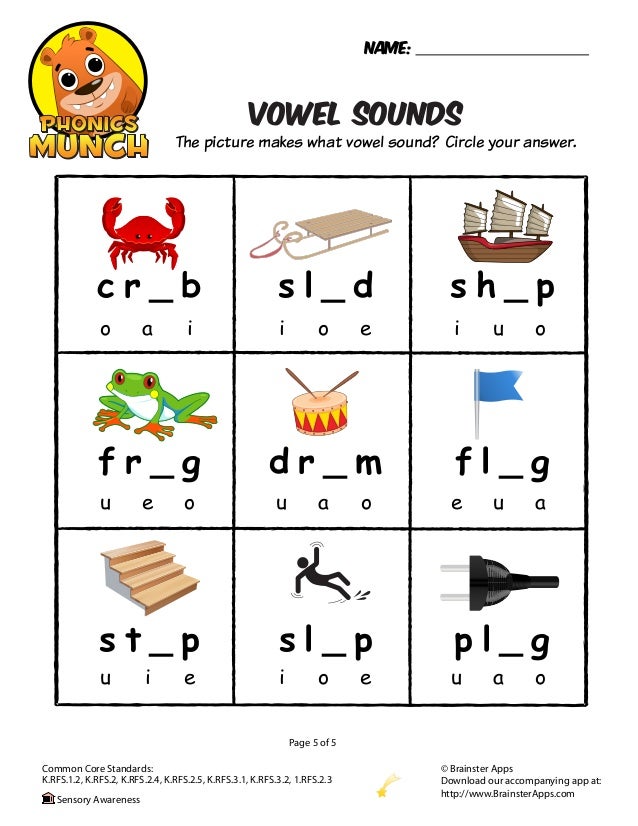
- Guys, you completed all the tasks from the package. Let's remind Masha again, what sounds are there? (Vowels and consonants) What color do vowels represent? (Red) Name the vowels (A, O, U, S, E, I). What words that begin with a vowel do you remember? (Answers of children). What about a consonant sound? (Answers of children). Guys, you were all great today! You completed all the tasks and helped our Masha! Now Masha can go to school with you!
What are letters and sounds? - Kindergarten No. 220 JSC Russian Railways
Usually parents say that the child does not pronounce some letters! Unfortunately, parents do not always understand the difference between such concepts as “sound” and “letter”. These terms must not be mixed!
Sound is the smallest, indivisible unit of the speech stream perceived by the ear. There are 42 speech sounds in Russian.
The letters are graphic characters that represent speech sounds when writing.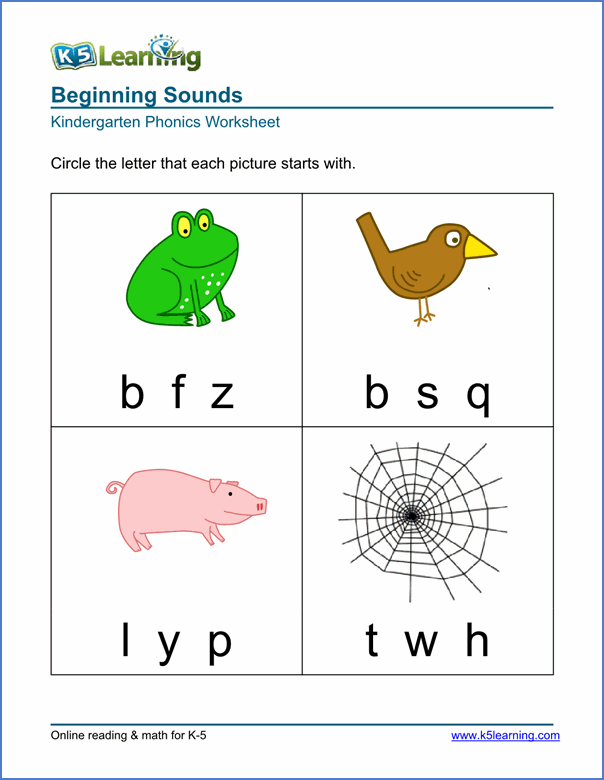 There are 33 letters in total.
There are 33 letters in total.
We pronounce and hear sounds, we see and write letters .
For parents of children of primary and secondary preschool age, is enough if the baby remembers that the letter stands for the sound "R" and learns it as "P" and not "er", "L" and not "el ”, “Sh”, not “sha”, etc.
Parents, older preschoolers and first graders need to know much more about sounds and letters.
Sounds are divided into vowels and consonants.
Vowels - when they are pronounced, the air in the mouth passes freely without encountering obstacles. There are 10 vowels in Russian ( a, y, o, e, s, e, e. i, u, i). There are only 6 vowels - [a], [o], [y], [i], [s], [e]. The fact is that the vowels e, e. yu, i in some positions denote 2 sounds:
ё - [y'o], e - [y'e], yu - [y'y], i - [y'a].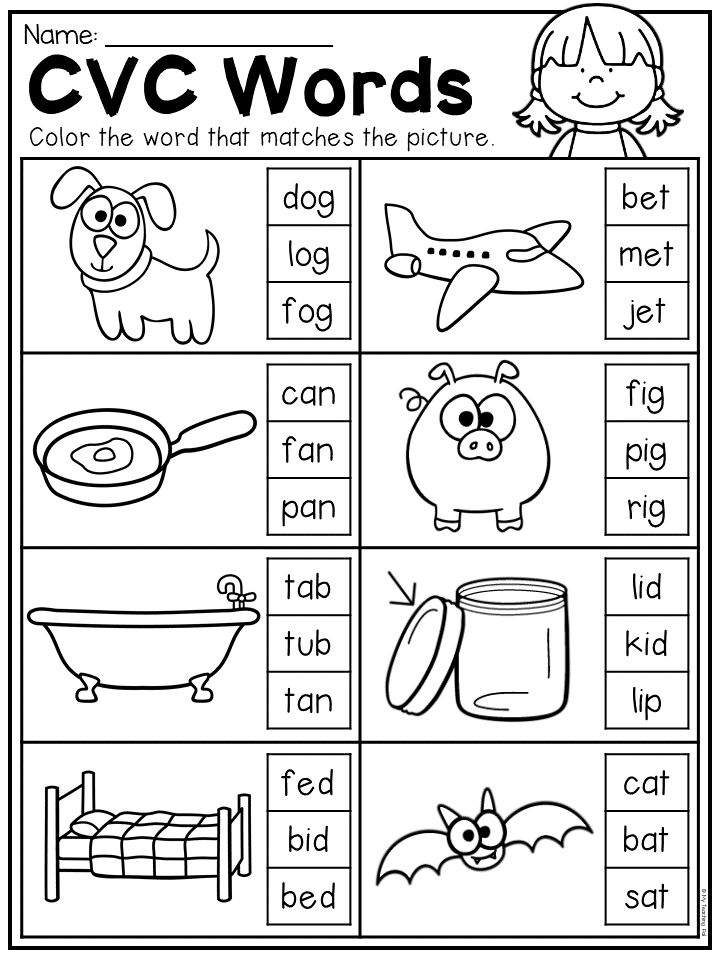
Vowel sounds are indicated by a red circle. Vowel sounds are neither hard and soft, nor voiced and deaf A vowel sound can be stressed or unstressed. Vowels form a syllable. There are as many syllables in a word as there are vowels.
Consonants sounds - when they are pronounced, the air in the mouth meets barriers formed by the tongue, teeth or lips.
Consonants are :
- hard - are pronounced hard. Marked with a blue circle. For example: [p], [k], [d], etc.;
- soft - soft. Marked with a green circle.
For example: [p']= (p), [k']= (k), [d']= (d).
Most consonants have a pair of hardness-softness. For example: [b] - [b '], [t] - [t '], [l] - [l '], etc.
But there are consonant sounds that do not have a pair of hardness-softness. They are either always hard or always soft:
- always hard consonants - [w], [g], [c];
- always soft consonants - [h'], [u'], [y'];
- voiced consonants - pronounced with voice.

 1 "Kolosok" of the first qualification category of Nizamova Zilya Semigullovna
1 "Kolosok" of the first qualification category of Nizamova Zilya Semigullovna 